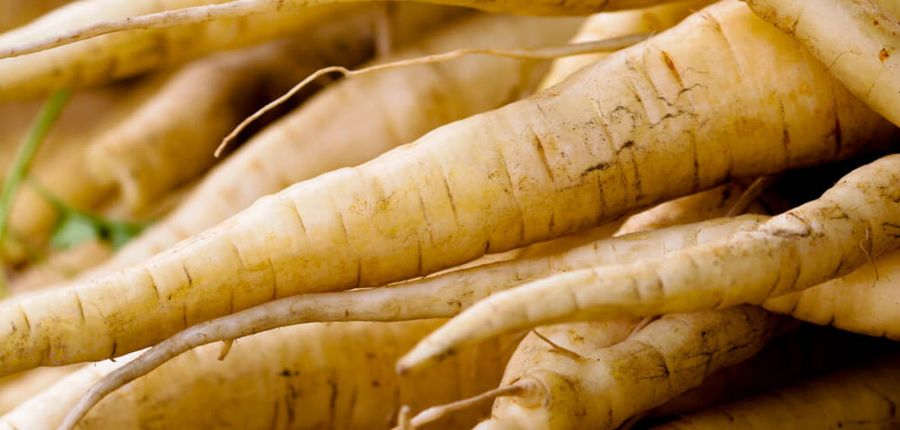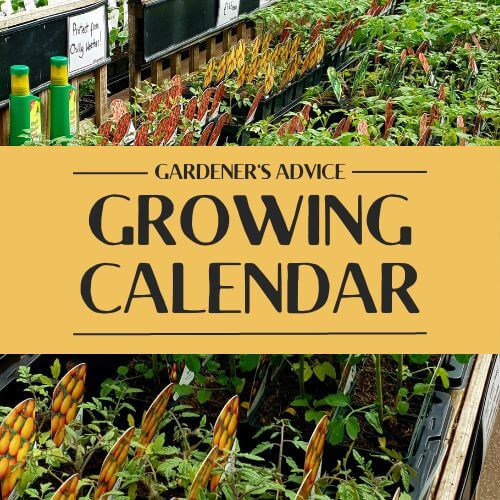Perfect Parsnips
Posted By: rocket veg Category: Growing Veg, Seasonal AdviceFor a satisfying meal in the depths of winter, nothing beats roast Parsnips – traditionally accompanying a joint of meat, or an essential part of a fantastic vegetable dish topped with melted goats’ cheese. Although Parsnip seed is one of the hardest to germinate, once underway the plants more or less takes care of themselves, so rise to the challenge, persevere with your sowing, and you will be handsomely rewarded! Tradition has it that parsnips are among the first vegetable seeds to sow in spring, and if you check the helpful instructions on the back of seed packets you will see that some varieties of parsnip, such as ‘Tender and True’, can be sowed as early as February.
Germinating Parsnip seed
Parsnip is one of the slowest vegetable seeds to germinate, taking up to four weeks, so starting it off early in the year ensures a long growing period and plenty of time for the plants to push their long, white roots deep into the soil. Now is the time to sow Parsnips and the first trick to help overcome problems with germination is to always use fresh seed, never from a packet which you had left over from the previous year. The soil temperature must also be right – too cold and the seed will lie dormant and simply rot by the time things have warmed up. 8°C (46°F) will do, but if you can hold back until the soil temperature is a steady 10-12°C (50-54°F) it will help. You don’t need a soil thermometer. Gardening folklore has it that the ground should be warm enough to sit on comfortably with a bare bottom, but the palm of your hand will do just as well.
Over the years, I have tried various ways of sowing Parsnip: scattering the seed along a shallow drill; placing a cluster of five or six seeds together in stations; encouraging the seed to sprout at home on damp paper towel in a saucer and then sowing as soon as the first tiny wispy shoot appears. Whatever method you use, patience is required. One thing is certain: the soil must not be allowed to dry out while Parsnip seed is germinating so cover the rows of seed with fleece or similar and if the weather turns warm and dry, especially when a breeze blows and leeches moisture from the soil, apply a gentle sprinkling of water. Modern varieties of parsnip (eg ‘Gladiator’ F1) have been produced for sowing later when the ground and air temperatures are warmer and germination more likely to be successful.
Growing hints and tips
-
Prepare the ground well before sowing, ideally digging deep and removing as many stones as possible – a tedious but worthwhile operation which will help the resulting roots (the important bit) to grow long and true and without forking. If you want to grow record breaking Parsnips, fill a length of plastic drainpipe with a mixture of sand and fine compost and set the seed on top: the world record for a Parsnip root is a staggering 5.607m (18ft 5in)!
-
The first golden rule with parsnip is that the seed doesn’t keep – so discard that old packet and buy fresh seed each year.
-
Create a shallow drill, 5cm deep, and sow small groups (‘stations’) of seeds every 15cm or so. Once the seedlings appear, thin out to one strong plant per station so they have room to develop.
-
Try sowing Radish seed in the same row as Parsnip. Radish is one of the fastest veg seeds to geminate and pretty easy to grow so once sprouting, will not only indicate where you have sowed your Parsnips but the young Radishes are also an early bonus crop.
-
Tempting though it may be, never transplant Parsnip seedlings. The first year I tried growing Parsnips I had the bright idea of filling in gaps with seedlings which I had thinned out. The result was a perfect row of evenly spaced, healthy-looking plants, but when I came to harvesting them in the autumn, I discovered that the ones which had been transplanted hadn’t developed roots. Such a disappointment.
-
Once they get going, parsnips are a surprisingly easy vegetable to grow. They manage well without being watered in dry weather and should produce longer roots which search for moisture deep in the ground.
Magic frost action
Parsnips are normally ready to lift for eating from early October onwards, but tradition has it that they taste much better after a good hard frost has nipped the soil. There is some truth in this, in that rather than producing their own sugar, cold conditions trigger some vegetables to convert their existing starch to sugars. Parsnips are the best example, but the same holds true for Carrots and Celeriac.
So, may your Parsnips seeds germinate so you can sit back and wait for a wonderful winter harvest. Parsnips are best roasted, perhaps par-boiled for a minute or two first and then coated with flour and finely grated parmesan cheese. Or try making curried parsnip soup – just the job for a cold winter’s day!







